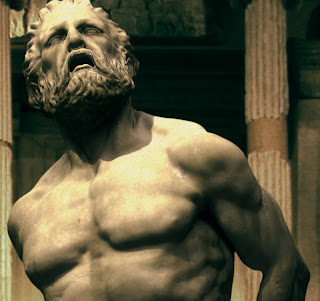On August 16, 2012, biotechnology patent owners
breathed a short sigh of relief, as the US Court of Appeals for the Federal
Circuit issued a highly anticipated decision in Association for Molecular
Pathology v. Myriad Genetics, finding that DNA sequences are indeed
eligible for patent protection.
However, not all biotech innovators will be happy with the Myriad decision since diagnostic method
claims were again struck down as ineligible for patent protection. Additionally, one of the three
judges on the panel dissented on the patentability of isolated DNA, arguing,
“extracting a gene is akin to snapping a leaf from a tree.” The final word on this subject may need
to come from the Supreme Court.
The Myriad
case had been on the Supreme Court docket briefly last year but was sent back
down to the Federal Circuit for reconsideration in view of the Supreme Court
decision earlier in its term in Mayo Collaborative Services v. Prometheus
Laboratories. In Mayo, the Supreme Court held that diagnostic claims
essentially claiming a natural principle are not patent eligible under § 101 of the Patent Act.
On remand, in a 2-1 decision, the Federal Circuit
upheld Myriad’s “isolated DNA” claims and the method claim directed to
screening potential cancer therapeutics, but also held that certain method
claims directed to “analyzing” or “comparing” gene sequences are not patent
eligible subject matter under § 101 in view of
Mayo. Judge Lourie, writing
for the majority, clarified that the issue is “patent eligibility, not patentability,”
and that policy questions – such as whether DNA warrants special treatment
under the patent laws – are best left to Congress.
In finding isolated DNA to be patent-eligible subject
matter, the Judge Lourie noted that the Supreme Court precedents in Chakrabarty and Funk Brothers, and not Mayo,
controlled patent eligibility for composition claims. The Federal Circuit essentially followed its earlier logic
in distinguishing these claims:
isolated DNA molecules are not found in nature, are man-made and the
product of human ingenuity. Both
Judges Lourie and Moore drew a distinction between products of nature and
products of man that “follow[], as all materials do, laws of nature.” In her concurring opinion, Judge Moore
indicated that the chemical difference between the in situ gene and the isolated gene was not by itself
sufficient to justify protection, but that change in combination with the
“enlargement of the range of . . . utility” derived from the isolation” led to
patent eligibility. Judge Moore
also appeared to place considerable weight on the USPTO’s long-standing practice
of granting patents on such subject matter.
In a dissenting opinion, Judge Bryson disagreed with
this majority on this issue of patent eligibility for genes. He concluded that the Mayo decision
handled down by the Supreme Court earlier this year was instructive because the
Court found that the method claim at issue in the Mayo case was not
directed to patent-eligible subject matter because it contributed nothing
“inventive” to the law of nature.
Judge Bryson likewise concluded that Myriad’s claims to isolated DNA
were not patentable because the Myriad had not done “enough” to distinguish the
alleged invention from a similar product of nature. He dismissed the act of isolating the DNA from the in situ gene as merely a matter of
breaking covalent bonds.
Upon reconsideration of the method claims also at
issue in this case, the three-judge panel came to the same conclusions it had
previously – albeit by different logic to take into account the Supreme Court’s
reasoning in the Mayo case. With
regard to the method of comparing or analyzing claims, the Court held that
there was no putatively transformative step to make each claim something other
than a claim to a natural law, and that the methods were simply directed to the
abstract mental process of comparing two sequences.
The Federal Circuit judges also found the claimed
method for screening of therapeutics to again be patentable subject matter,
holding that even though a method includes known steps it can be sufficiently
transformative if the steps are to create novel, i.e., transformed, subject matter. The fact that the claim includes the steps of determining
and comparing the cells growth rates “does not change the fact that the claim
is based on a man-made, non-naturally occurring transformed cell – patent-eligible
subject matter.”
The Federal Circuit’s application of the Mayo case to Myriad’s claims on
diagnostic methods provides little guidance on how to draft such diagnostic
claims to secure allowance – and survive future patentability challenges. It is clear that the claims must recite something "transformative." However, what constitutes a transformation in a diagnostic method remains to be elucidated.
Moreover, the discussion of patentability for DNA
sequences is far from being over.
Should parties appeal in the next 90 days, the Supreme Court could again
grant certiorari or there could be an en
banc rehearing by the full Federal Circuit.
- Tom Engellenner
This entry was prepared with the help of
Padma Choudry. This blog is for
information purposes only and should not be construed as legal advice on any
specific facts or circumstances.
Under the rules of the Supreme Judicial Court of Massachusetts, this
material may be considered as advertising.


